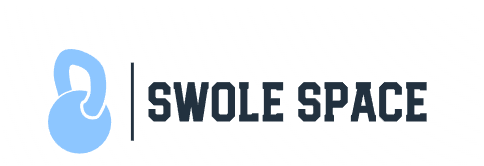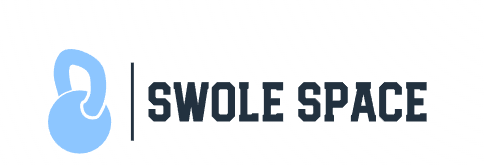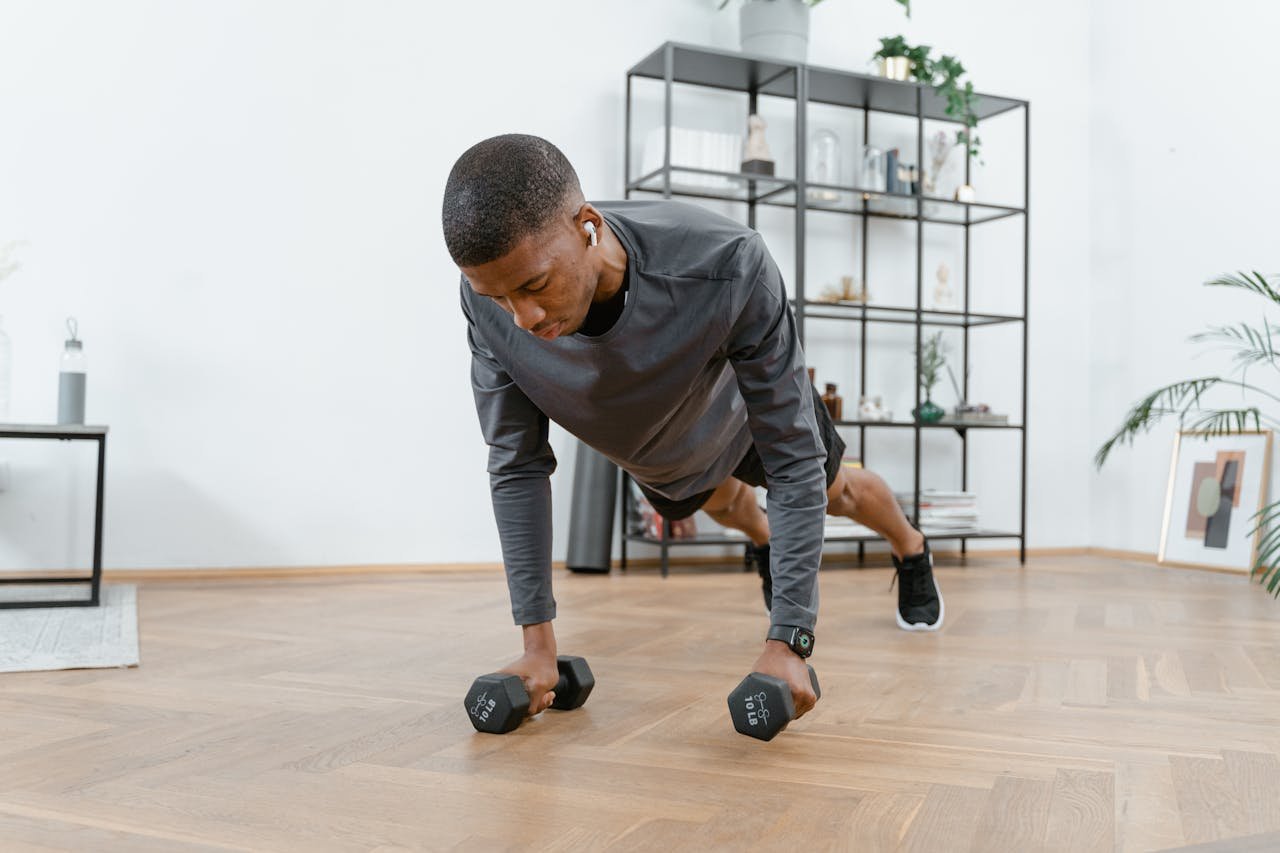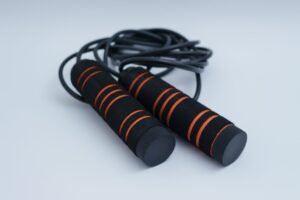Calisthenics is one of the most accessible and effective forms of strength training. You don’t need a gym membership, fancy machines, or years of experience to get started. In fact, with just your bodyweight and a bit of space, you can build real muscle, improve mobility, and boost cardiovascular health—all from home.
In this guide, we’ll break down everything you need to know to start your calisthenics workout plan for beginners, from benefits and foundational exercises to a full weekly plan tailored for beginners.
Table of Contents
Why Start Calisthenics?
Before jumping into a plan, it’s important to understand why calisthenics is such a powerful tool for beginners.
1. Minimal Equipment, Maximum Results
Calisthenics relies on compound movements that work multiple muscle groups at once. Push-ups, squats, pull-ups, and planks might look simple, but they challenge your body in ways isolated gym machines can’t. This leads to better functional strength, stability, and coordination.
Pro Tip: If you’re building a home gym, check out our guide to Calisthenics Equipment for Home Workouts that delivers results without clutter.
2. Scalability and Progression
You can start with wall push-ups or knee planks and gradually move toward advanced moves like muscle-ups and pistol squats. Calisthenics naturally builds in progression, so your workouts grow with you.
3. Total-Body Conditioning
A well-structured calisthenics plan strengthens not only your muscles but also your tendons, joints, and connective tissue. You’ll develop balance, mobility, and control—qualities often overlooked in other workout styles.
Core Principles for Calisthenics Beginners
1. Focus on Movement Patterns
Instead of thinking in terms of “chest day” or “leg day,” calisthenics groups exercises by movement patterns:
- Push: Push-ups, dips
- Pull: Rows, pull-ups
- Squat: Air squats, split squats
- Hinge/Core: Planks, leg raises
Balancing all these patterns helps avoid imbalances and leads to a stronger, more capable body.
2. Master Body Awareness
Unlike machines that lock you into a specific path, bodyweight exercises force you to stabilize yourself. You’ll naturally develop better posture, spatial awareness, and control.
3. Start Slow and Prioritize Form
Trying to do too much too soon can backfire. The first few weeks are about learning form and building consistency. Once your body adapts, progression becomes smoother.
Essential Beginner Exercises
Here’s a breakdown of beginner-friendly movements that cover all major muscle groups. These should form the core of your routine.
| Movement Type | Exercise | Notes |
|---|---|---|
| Push | Incline Push-Ups | Start on a bench or wall if needed |
| Pull | Bodyweight Rows | Use a sturdy table or low bar |
| Squat | Air Squats | Add pause or tempo for intensity |
| Core | Plank | Start with 20–30 seconds |
| Glutes/Legs | Glute Bridges | Great for hip strength |
| Cardio | Jumping Jacks | Use as a warm-up or finisher |
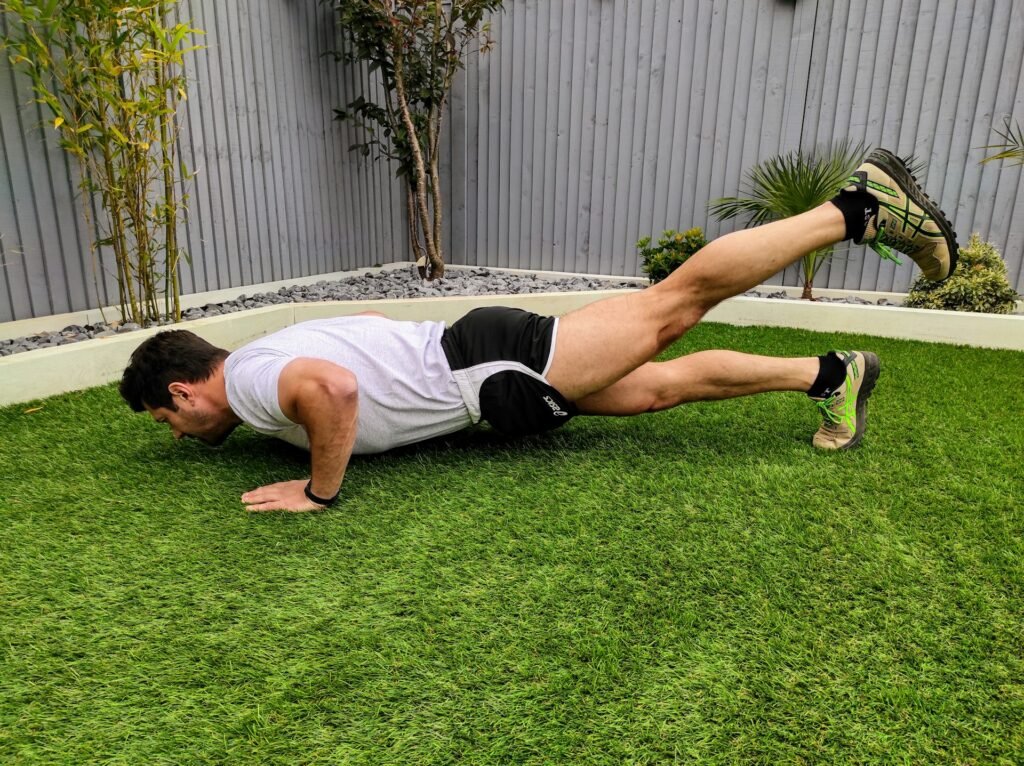
Weekly Calisthenics Workout Plan for Beginners
Below is a 3-day weekly split that balances full-body strength, core training, and recovery. You can repeat this cycle for 4–6 weeks before leveling up.
Day 1 – Push + Core Focus
- Incline Push-Ups – 3×10
- Knee Dips or Bench Dips – 3×8
- Plank – 3×30 sec
- Leg Raises (Bent Knees) – 3×10
- Jumping Jacks – 2×1 min (optional finisher)
Day 2 – Pull + Lower Body
- Bodyweight Rows – 3×8
- Glute Bridges – 3×12
- Wall Sit – 3×30 sec
- Side Plank – 2×20 sec per side
- Light Jog or Walk – 10–15 min
Day 3 – Full Body + Mobility
- Air Squats – 3×15
- Incline Push-Ups – 2×10
- Bird Dogs – 3×8 (each side)
- Hip Flexor Stretch – 2×30 sec per side
- Plank – 2×45 sec
- Jump Rope or Marching – 5–10 min
Rest at least 1 day between workouts. Stay consistent, not rushed.
Optional Gear to Enhance Your Workouts
While calisthenics is equipment-free at its core, a few smart investments can expand your exercise variety and support progression.
Pull-up Bar: Essential for rows and pull-ups. Choose a doorway version or freestanding bar.
Resistance Bands: Great for assisted pull-ups or added resistance on squats.
Parallettes: Improve wrist comfort and allow deeper push-ups or L-sits.
Want help choosing the best tools? Check out our guide to top calisthenics gear for home workouts.
Nutrition and Recovery Matter Too
Even bodyweight training places stress on your muscles and nervous system. Support your progress with:
- Protein Intake: Aim for 0.7–1 gram per pound of body weight.
- Hydration: Drink water throughout the day.
- Sleep: 7–9 hours helps recovery and muscle repair.
- Stretching & Mobility Work: A few minutes daily can reduce soreness and improve performance.
Progress Tracking Tips
To stay motivated and see gains over time, track:
- Reps and sets each workout
- Weekly improvements (e.g., longer planks, better form)
- Photos or videos (form review + motivation)
- Energy and soreness levels
You don’t need to be perfect—just better than last week. Progress isn’t about perfection; it’s about showing up consistently, learning from your mistakes, and celebrating every small victory along the way.
Final Thoughts
Starting a calisthenics workout plan as a beginner might feel overwhelming, but this method of training is one of the most natural and rewarding ways to build a strong, capable body. It’s scalable, safe, and builds more than just muscle—it builds discipline, body awareness, and confidence.
As you gain experience, you can increase difficulty with tempo work, unilateral movements, or even start chasing advanced goals like handstands or front levers.
Looking to take your home workouts even further? Don’t miss our breakdown of the best calisthenics equipment for a minimalist home gym—a game-changer if you’re training in a small space or on a budget.
